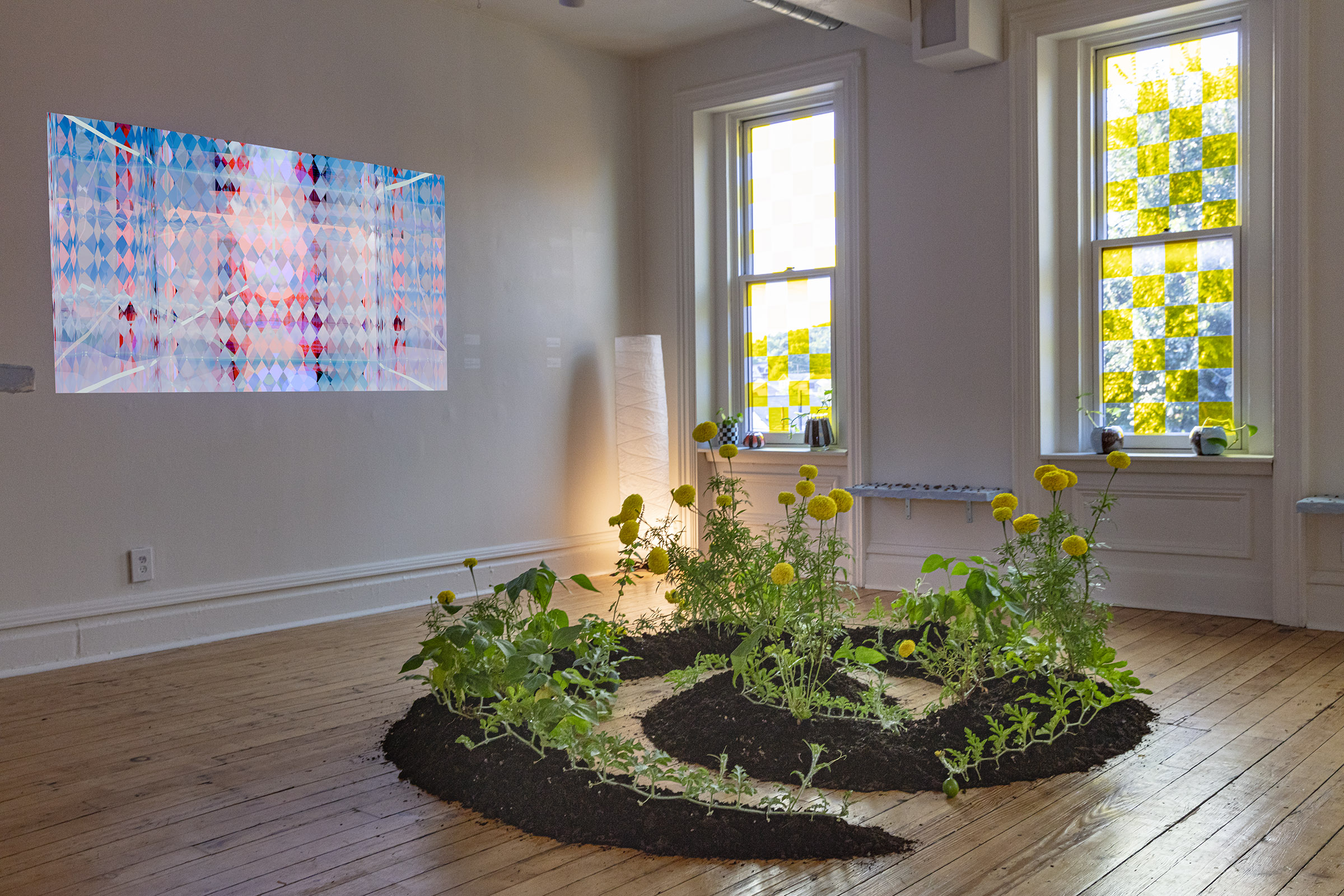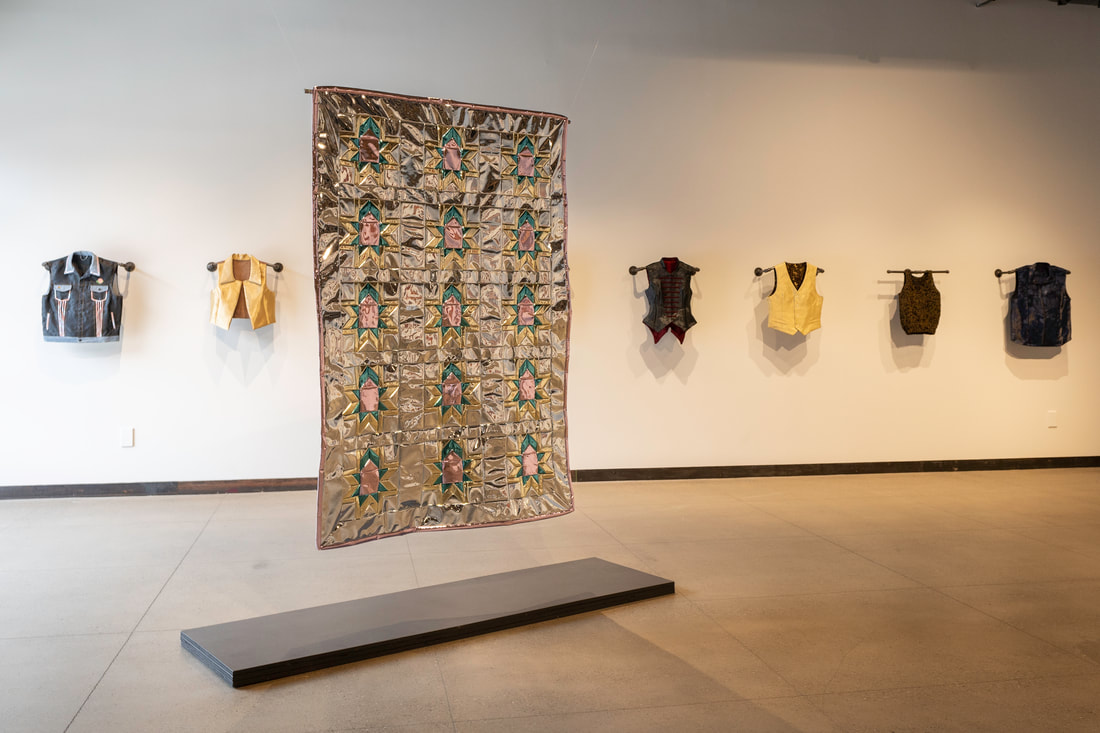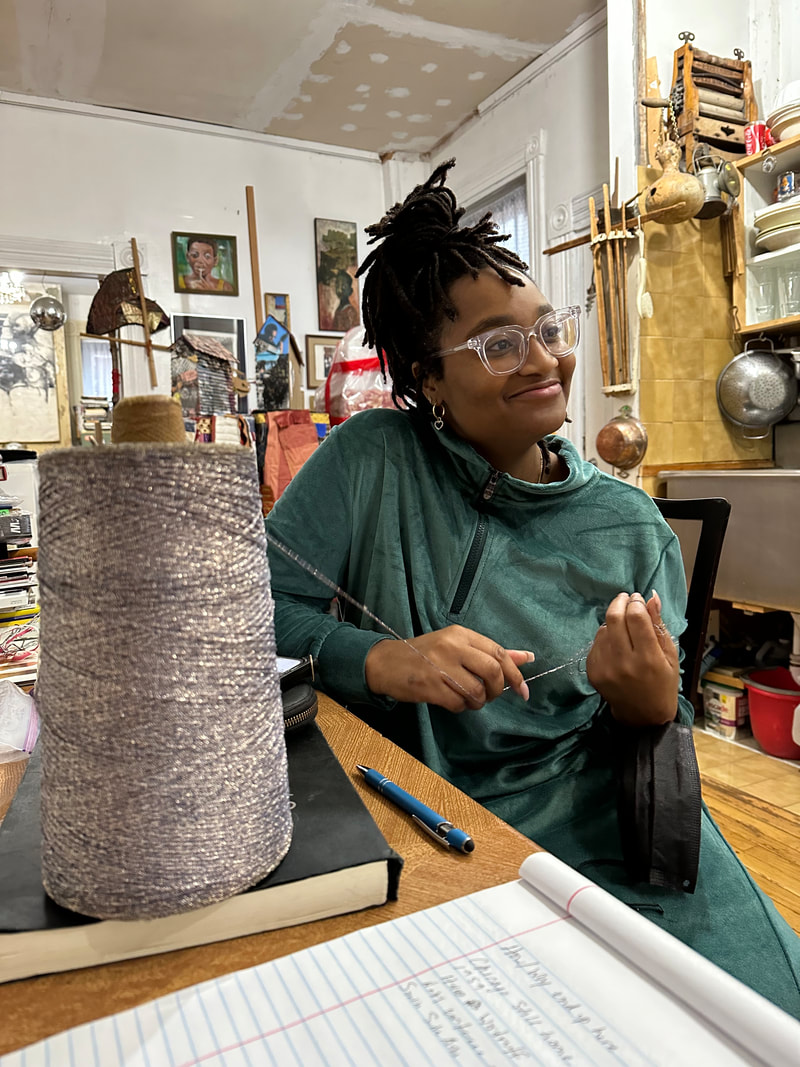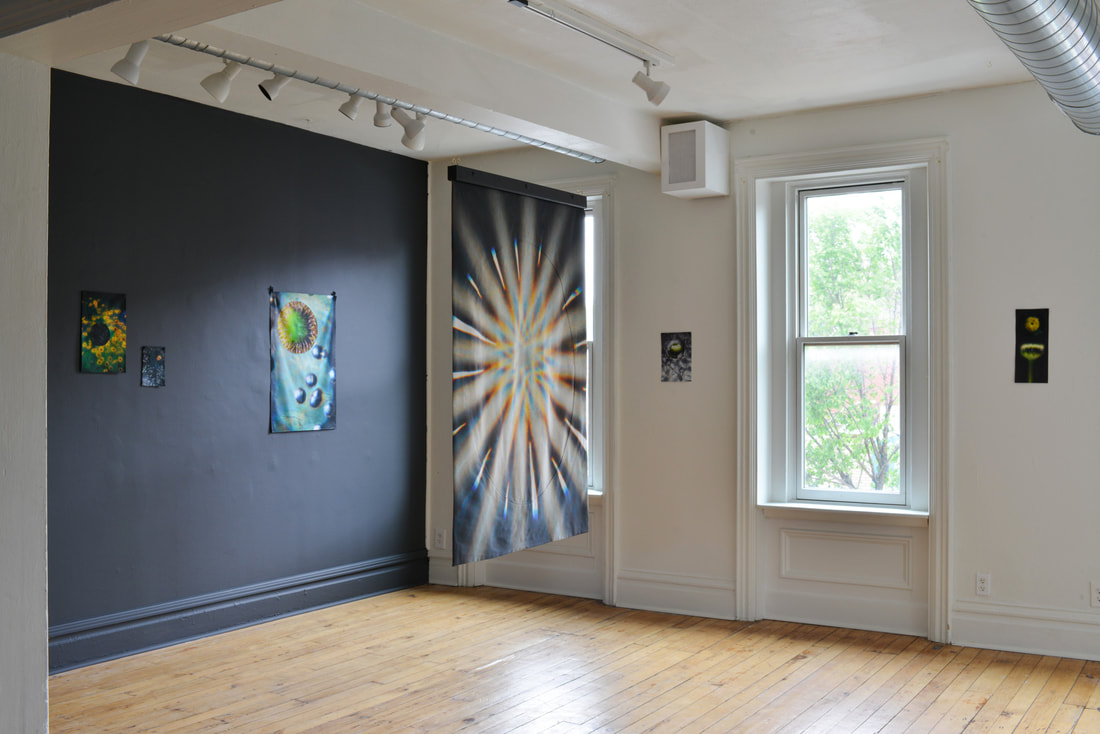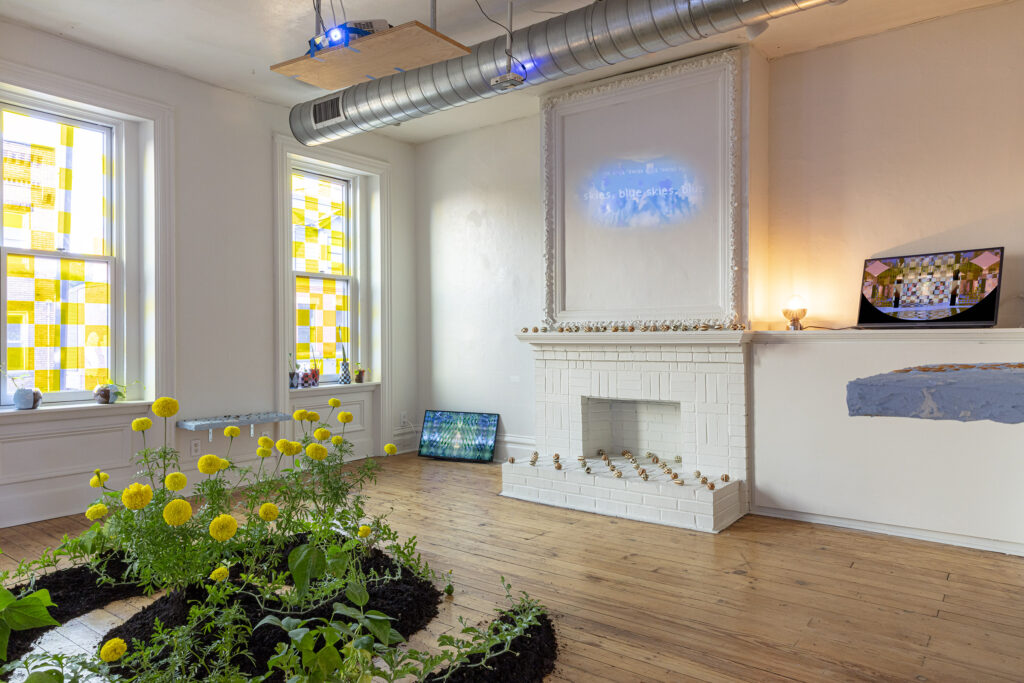
by Jenna Peng |
I’ve been feeling like I’m back in Florida—a place where I felt no continuity of becoming, yet I went incessantly on. The wetlands, the orange houses, the there-and-back trails with Spanish moss swaying in a single slow motion. My mom loves the moss, like a storybook, she said. I love this view, my friend Noah said, we were standing on rocks in Maine, it’s like I’m experiencing three different times at once. He gestured to the waves, tides, and pools between us. I turned back to look for longer but what I wanted to see was already in what he said.
I am considering how being a time-based artist is about creating these profound ways of holding and beholding and not holding and not beholding time, but really it is about time management. The flowers are dying nicely in time for First Friday. Working with time, playing with time, I’d rather let it all play out. Time doesn’t want to be managed! But then it all becomes so unmanageable.
Lucia is interested in shapes for time, maybe they’d say shapes of time. They’re interested in “pattern and repetition as a manifestation of time.” A heartbeat. Paul quotes to me, “there is no continuity of becoming, but there is a becoming of continuity.” [1] There is a pulse, though writing so often doesn’t take the time it took to write it. Sometimes it’s like everything in between is artificially excised and you’re left with a best of, this plateau of spikes. On Lucia’s materials list: “1 year and 10 months of resting time, 7,333 polygons, 10,760 vertices, 499 frames, two eyes, one mouth, photo of blue skies.”
I moved to Pittsburgh in pandemic time. I hadn’t made any friends, but my brother was the best friend, and when I was alone, I would go to a pocket in Frick Park, read, get tired, lay back, and watch the clouds pass me by. I was never as good at staying with clouds as I was with thoughts, often I’d forget I was watching them, I’d never let myself forget I was holding them. At the time, I had nothing but time. I walked to the edge of a thought and walked back and again and again until it went still.
Lucia describes what they do as “laying pattern on top of pattern until it cancels out and becomes static.” Lucia loves the word static, because it means still and also that low radio hum, but lower than low and less moving than a hum, I love the sound of static. I recently finished writing, or rather I finished holding onto, a piece that was about becoming static. I conceived of it as a radical radiophonics for a language tuned out of attunement; I thought to open instead to the ways knowledge production is always irrupting into cross-frequencies and static; I felt an overvoicing I couldn’t get out from under me; I heard a sound not yet speech, a sound not quite sound, an uhm hum, mhmm, or perhaps the inaudibility these inarticulate sounds resonate with.
I feel this way when I look at the spiral of rocks, the rocks are spiraling! Quickly then slowly eddying, or also spinning out, in a redshift drift, and most overwhelmingly, stilled, stiller than stilled, still. It is very exacting the way Lucia shapes time, works it into serial alignment. The carved, desiccated fruits are exactly how I would place my stuffed animals on my bed before teaching them sentence diagramming and long division. This way of working time does not feel forced, through it is contracting in nature. A kind of playing pretend, let me lay it out flat.
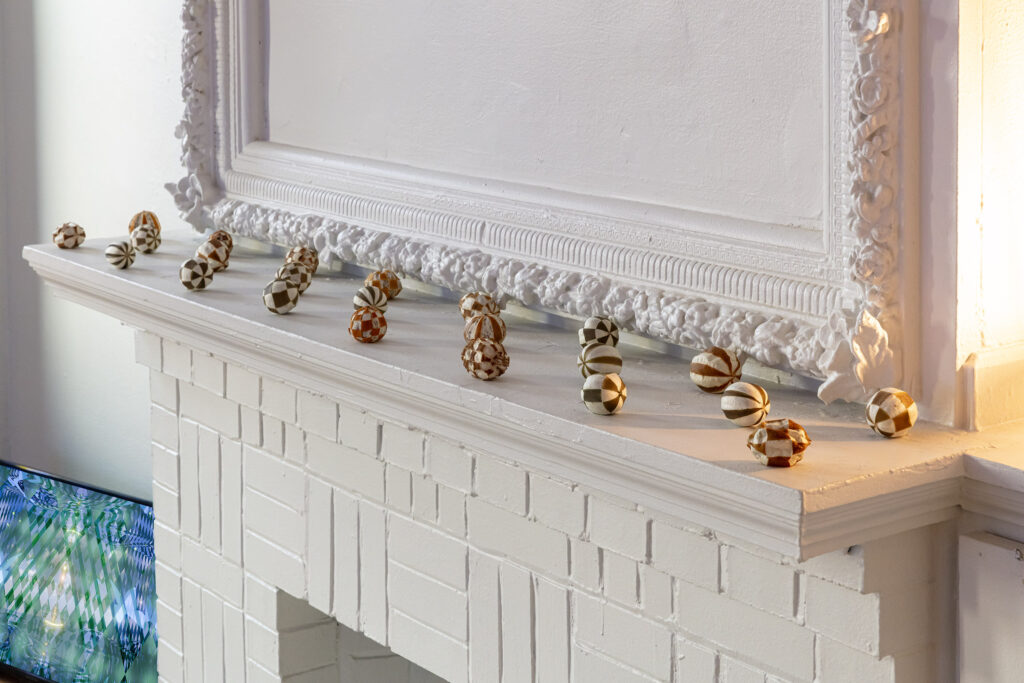
“pith: 56 various citrus including “cuties,” lemons, and limes, hundreds of hours of low-temp toaster oven drying, satisfaction, clarity.” Pith is another good word, one that means the opposite of what it means: essence and the inside side of the rind. Lucia explains the experience of carving the fruit, and the experience of looking at the digital patterning, looping, as “giving your brain enough to do or look at, so all the excess things can go into it and you can focus.” Become static. They had a lot of time to get some thinking done. I look at the desiccated fruit and I see the desiccated fruit. I look at Paul’s realizations and I see he’s realized some things. [2] I look at a David Woo line and see so clearly that language is a footfall and also only the print it leaves behind. The pith of pith: the very thing beside the very thin(kin)g that was happening.
This is how I gather, when I gather, I say as we gather around the cardboard cypresses and the ec/static whirlpool looping on a laid flat flatscreen. Some here, some there, something so beside something else, that if we still call this a gathering, it is “a gathering of nothing, a communicability of nothing, a meeting of dispersions.” I ask Lucia what verb goes between the cypresses and the flatscreen, the organic and digital instantiations of their work. It’s ontologically nonseparable, they’re conceptually the same—both “looping and infinite, yet extremely short in reality”—and I find it all so experientially clashing. Moments like this I become one and two. What makes it all make sense for you?
*unless otherwise noted, quotations are Lucia Riffel’s.
- Alfred North Whitehead, ask Paul which book.
- Paul Peng. Intentions. 13 Sep. 2024–26 Oct. 2024, april april, Pittsburgh.
- Fred Moten and Wu Tsang, Who Touched Me? Self-published, 2016.
Jenna Peng writes poetry and art criticism, and often both at the same time. Her writing has appeared in Harriet, the Asian American Literary Review, and various emails. She is Co-Curator of Read-Shifting Web, an Asian diasporic reading room/literary arts exhibition, and Co-Teacher of the Anti-Ante-Auntie-Seminar series. She lives in Pittsburgh, occupying Shawandasse Tula land.
